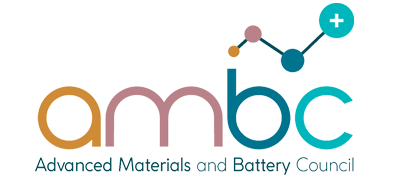May 11, 2024
Graphite for Batteries – UP Catalyst: Five Lessons Learned from Scaling Up the Reactor. UP Catalyst is a young Estonian company founded in 2019. It produces graphite and carbon nanomaterials directly from CO₂ emissions with the mission to replace fossil-based polluting imports from China. In May 2024, the company officially transitions from kilogram-scale to ton-scale production. The company is launching ton-scale production just at the right time, supported by the high demand in carbon materials and the most recent EU legislations: The Net Zero Industry Act, adopted on April 25th, and Carbon Footprint Methodology for EV batteries, released on April 30th. Sander Trofimov, 30-year-old charismatic Head of Production, shared insights into the lessons he learned during the one-and-a-half-year journey of scaling up the reactor. Carbon materials are everywhere, we all encounter items made with carbon in our daily lives. For instance, about one third of EV batteries consist of graphite, and as Europe plans to have 40 million EV cars on the road soon, we would need a lot of carbon! Concrete is the most consumed material, second only to water, and it also contains carbon nanomaterials. Items painted in black most likely contain carbon black. I could easily spend an hour listing items that contain or would benefit from containing carbon materials. When we scaled up the reactor to increase production, we were constantly mindful of the fact that currently, 90% of the demand is met by Chinese production, which comes with significant CO₂ emissions, land degradation, and human rights violations. So, I personally felt a big responsibility not to fail and scale up as quickly as we could. And here is what I have learned: 1. When you scale up, you scale both the good and the bad. On a small scale, many problems go unnoticed. For instance, in a small laboratory reactor, if one wall bends by a fraction of a millimeter, it may not have any noticeable negative impact on the final product. However, when the reactor is 10 times larger, the distortion is also magnified, resulting in a lower-quality product. 2. You can’t jump from a kg scale production to ton scale production. You need to make intermediate steps.There is this concept, Technology Readiness Level (TRL), which essentially means the maturity of the technology. In our case, our TRL has a lot of room to improve. There’s no precedent for a reactor the size we built. So, you either need to proceed gradually, carefully evaluating the results after each small step, or you need a significant amount of funding, as the more you hurry, the more mistakes you make. Imagine you already ordered an expensive detail for the reactor, but after a test you realize the design is flawed. Then you need money to order a new one. 3. What you can do is look at other industries for knowledge and leverage the lessons they’ve learned. For example, 30 years ago there were no electric cars, but the car industry itself was already a century old. Tesla started with a relatively low TRL but accelerated their development by drawing on expertise from the 100-year-old car industry. In our case, one of the most valuable sources of insights was the aluminum industry with its 100 years of expertise. While the technologies are different, there are still some similarities, and I learned a lot from them. 4. Spend time on writing specifications, covering in detail all aspects of production. It’s essential to involve as many people as possible in reviewing specifications to ensure completeness and accuracy. Without a clear vision of the end-product, specifications may fall short. Initially, we outsourced a mechanical design engineer to visualize the reactor, but ultimately, we decided (and never regretted it!) to hire a mechanical design engineer in-house. It significantly streamlined the process, as shorter communication lines lead to faster iterations. In just 1 month, we accomplished what we had been trying to do for the past 7 months. 5. Mistakes are inevitable, but you need to decide, with which you can live, and which are critical. When faced with a problem, such as discovering a flaw in a component that has already been ordered, it’s crucial to decide whether it can still be used for testing or if investing in a new one is necessary. While some issues may seem minor at first, they can accumulate over time, eventually reaching a point where all together they can no longer be tolerated. This is where Failure Mode and Effects Analysis (FMEA) becomes essential. When evaluating, if we need to invest in a new component or tolerate the one with a flaw, I often think about the worst thing that can happen. If the worst-case scenario is manageable, I let it be. But it also happened to me that something seemed non-critical overall, but then unexpectedly it affected something in the very final stage. READ the latest Batteries News shaping the battery market Graphite for Batteries – UP Catalyst: Five Lessons Learned from Scaling Up the Reactor. Materials

